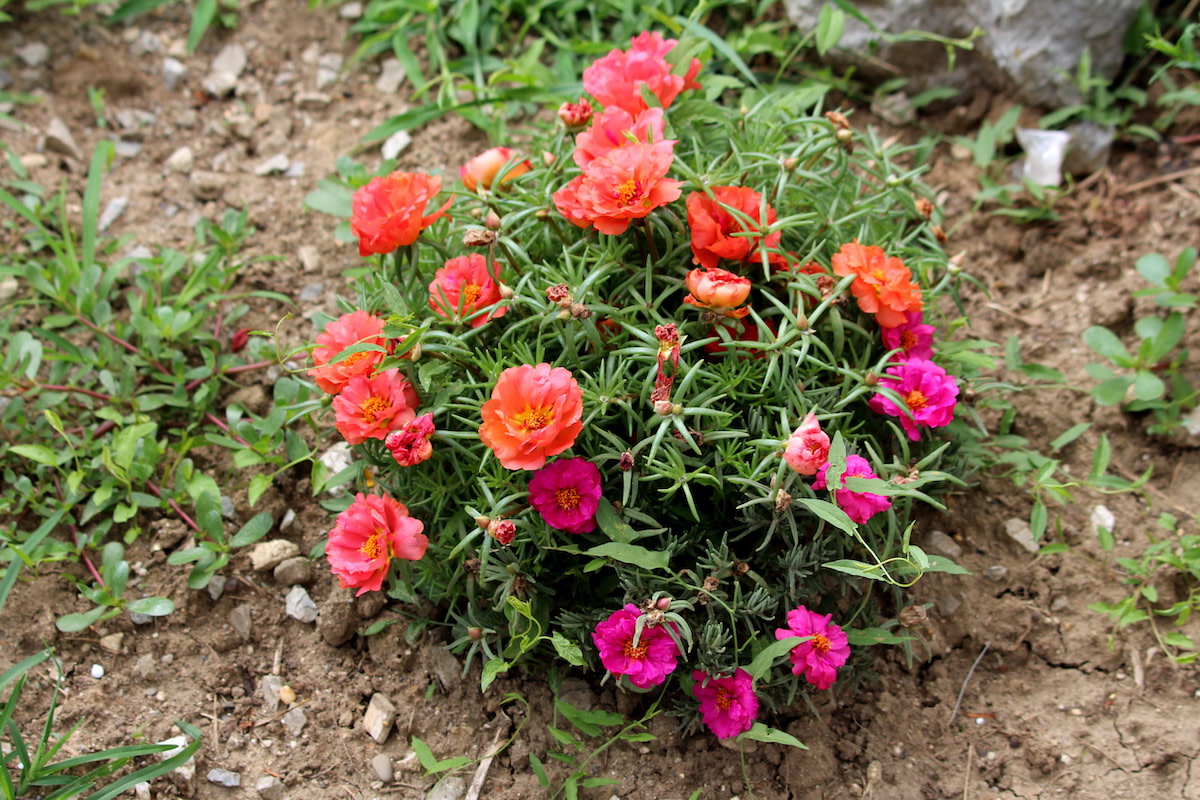Moss Rose Care Guide: How to Grow Moss Roses
Written by MasterClass
Last updated: Jun 7, 2021 • 3 min read
Moss rose is a semi-succulent flowering plant that thrives in dry conditions.
Learn From the Best
What Is Moss Rose?
Moss rose (Portulaca grandiflora) is a brightly colored annual flowering plant. Native to the arid plains of Argentina, Uruguay, and Brazil, moss rose is a drought-tolerant plant belonging to the Purslane family. You can easily identify moss roses by their pom-pom-shaped blossoms and succulent leaves. Moss rose plants are capable of storing water inside their thick stems and fleshy leaves, which helps protect them from high temperatures and intense sunlight. This also makes moss rose a relatively low-maintenance flowering plant.
Moss rose is often sold as groundcover since it makes a festive addition to rock gardens, walkways, and stone walls. You can also plant it in a hanging basket; its dense leaves and hardy flowers make for a vibrant display. You can find seed packets containing single varieties or a mixture.
5 Varieties of Moss Rose
There are many moss rose plants to choose from, so start by familiarizing yourself with a few popular cultivars.
- 1. ‘Sundance’: ‘Sundance’ moss roses have semi-double flowers, meaning they have two to three times the amount of petals other moss rose varieties have. The blooms also tend to stay open longer than average.
- 2. ‘Calypso Mix’: The ‘Calypso Mix’ cultivar features double blossoms in a variety of warm hues like orange, red, and yellow.
- 3. ‘Duet’: The ‘Duet’ cultivar gets its name from its bicolor flowers, boasting vibrant petals of yellow and red.
- 4. ‘Fairy Tale’ series: ‘Fairytale’ moss roses have pom-pom centers encircled by flat outer petals. The cultivars in this series come in enchanting varieties with names like ‘Snow White,’ ‘Sleeping Beauty,’ and ‘Cinderella.’
- 5. ‘Happy Hour’ series: The ‘Happy Hour’ series of moss roses are named as such because they tend to bloom earlier than other varieties. They come in a variety of bright colors and have fruity names like ‘Coconut’ and ‘Banana.’
How to Plant Moss Roses
Moss rose plants take well to transplanting and are relatively easy to get started, so long as you keep a few considerations in mind.
- Start seeds indoors. You can start moss rose plants from seed indoors six to eight weeks before your area's projected last frost date. If starting your seeds indoors, place the seedlings near a bright window. Once there's no longer any danger of frost, you can plant your moss rose directly in the ground.
- Expose seeds to the sun. Whether you’re starting your seeds indoors or outdoors, scatter them on top of lightly moistened soil. They need light to germinate, so be sure not to cover them up. Germination takes about two weeks.
- Choose a site with sandy soil. Moss rose plants will tolerate most types of soil, but they thrive in sandy, well-draining soil. Pick an area that gets full sun and has enough space for the plants to grow three to eight inches tall and 12 to 24 inches wide. While they need lots of warm sunlight to thrive, moss roses are fairly adaptable and can survive in USDA hardiness zones 2 to 11.
- Keep the seedlings moist. Keep newly planted seeds lightly moist until they've completed the germination process. Then, water the plants only when the top inch of soil feels dry to the touch.
How to Deal With Moss Rose Pests
Whether you're new to gardening or a master gardener, moss rose plants are fairly simple to grow and care for. Although moss roses may occasionally attract aphids, they are not particularly susceptible to pests. You'll know you've got aphids if your plants' leaves begin to yellow and wilt, or if you find a sticky substance on the foliage. Spray your leaves with an organic pest spray to solve the problem. You can also try wiping them away with a cloth soaked in soapy water. If the problem persists, consult your local garden center.
Learn More
Grow your own garden with Ron Finley, the self-described "Gangster Gardener." Get the MasterClass Annual Membership and learn how to cultivate fresh herbs and vegetables, keep your house plants alive, and use compost to make your community—and the world—a better place.
